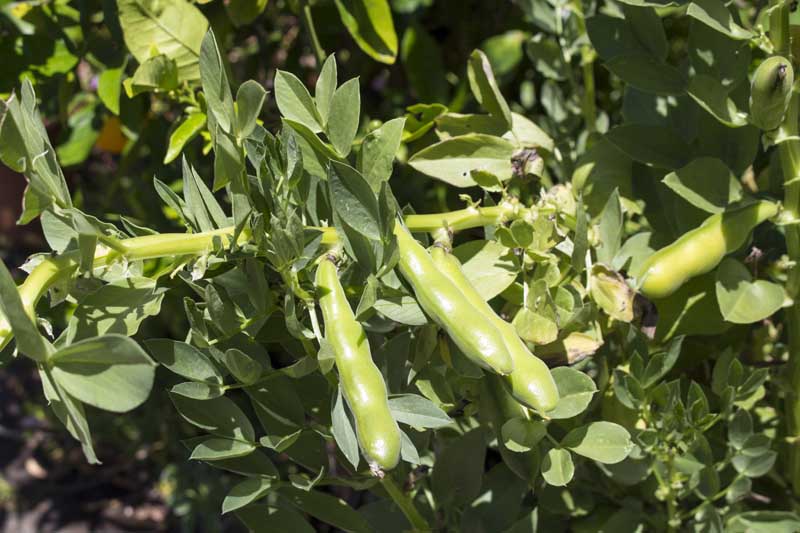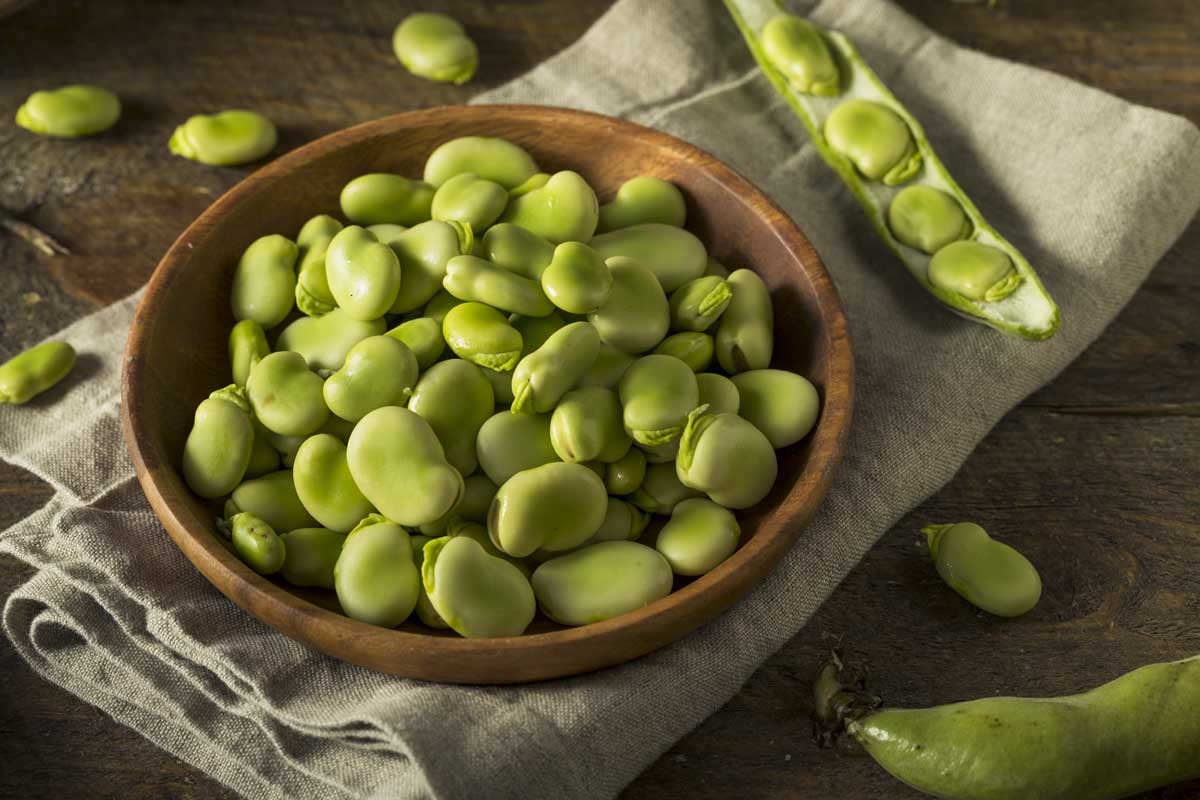Fava beans, more commonly called broad beans are actually ‘legumes’, they grow best in temperatures ranging from 60 to 70 degrees F, they are a are a cool-season crop. Some varieties will grow in temperatures as low as 40 degrees F , however most broad beans will not set pods in hot weather.
Broad beans should be sown in early spring as soon as the soil is workable and harvested before the dog days of summer commence.
They require 80 to 100 days to reach full maturity. In milder winter regions broad beans can also be planted in early autumn for a winter harvest.

The broad bean is a hardy annual it is bushy, and can grow from 3 to 5 feet tall. Bean Pods are up to 8 inches long and contain up to 6 flat, oblong seeds that are green, white, yellow, or pale-red depending on the cultivar. They have white flowers sometimes speckled with brown.
Site Selection
A site with full sun is best, partial shade somewhat tolerable. Plant broad beans in non compacted, loose, well-drained soil with plenty of organic matter such as aged compost. Optimal soil pH of 6.0 to 6.8 is best. [See Tracking and Adjusting Soil pH ]
Planting and Spacing
Sow seeds about 1 inch deep and space them 4 to 5 inches apart. Space rows 1 1/2 feet to 2 1/2 feet apart. You may have to thin out weaker seedlings later to attain 8 to 10 inch spacing.
You can also start broad Beans / fava beans indoors in peat pots a few weeks prior to transplanting outdoors. They frequently suffer from transplant shock – so hardening off is recommended , as well as taking care not to damage the root system when transplanting them.
Water and Fertilizer
Water broad beans regularly , just don’t drown them . Keep the soil uniformly moist during flowering and pod formation. Plant broad beans in well-drained soil.
They do not require additional feeding other than planting in fertile, well composted soil. Beans will provide their own nitrogen and excessive nitrogen will produce a lush foliage at the expense of the harvestable beans.
Potassium and phosphorus fertilizers are best if you insist on adding additional fertilizer.
Companion Planting
Good Companion plants: Bush beans, cucumbers, corn, celery, potatoes, Pole beans, sunflowers. Do not plant beans with onions, garlic, beets, or kohlrabi.
Rotate lima beans to spaces where lettuce, squash, broccoli, Brussels sprouts, cabbage, cauliflower, spinach or collards have been grown in the preceding year or two. See – Companion Planting
Disease and Pest Problems
They are susceptible to anthracnose, blight, and mosaic. Plant disease-resistant varieties.
Keep the garden clean and free of debris. Avoid handling plants when they are wet so as not to spread fungal spores. If any of these have been a problem in the past plant disease resistant varieties.
Proper sanitary practices are vital to the health of your garden. Proper sanitation can help to ensure disease-free and productive plants [See: Top Ten Garden Tips].
Common pests are aphids, beetles, leafhoppers , mites and cabbage moths – the cabbage moth worm will shelter inside broad beans, allegedly they don’t harm the beans , but trying telling that to the guy who just found half a worm in his beans.
Harvesting and Storage
Broad beans can be eaten pod and all, harvested fresh and used like snap beans when the seeds are about the size of a pea. The most common usage of broad beans is in growing to full maturity and used as shelled beans.
Average maturation from planting to harvest is about 80-85 days, this of course varies depending on the particular cultivar.
Storing and preserving. Un-shelled broad beans will keep in the refrigerator for about a week. They can also be dried, frozen or canned. Dried shelled broad beans can be stored for up to a year.

